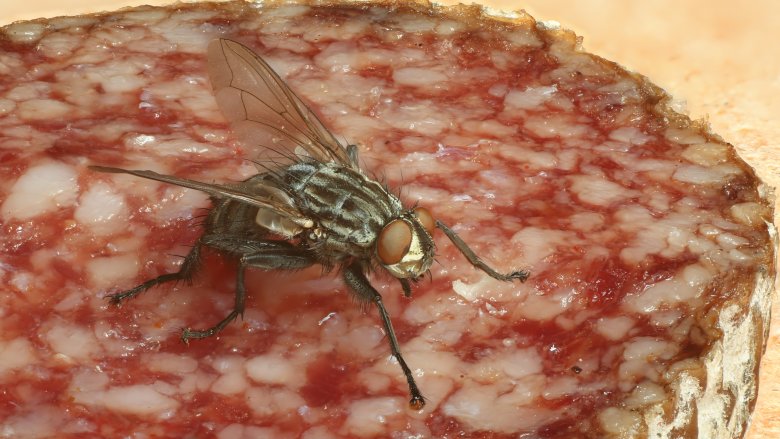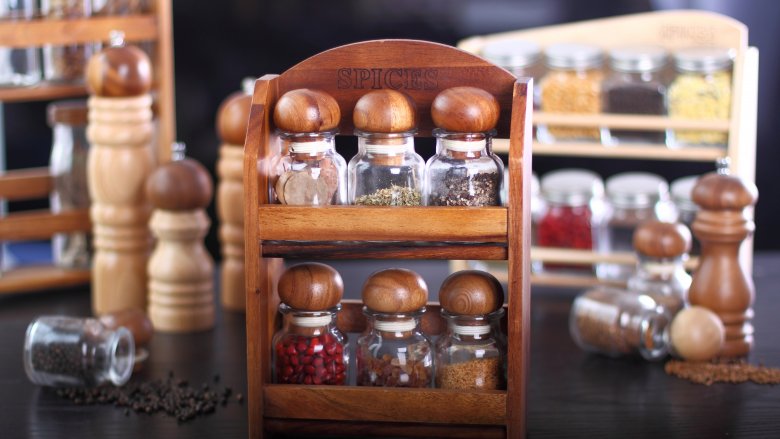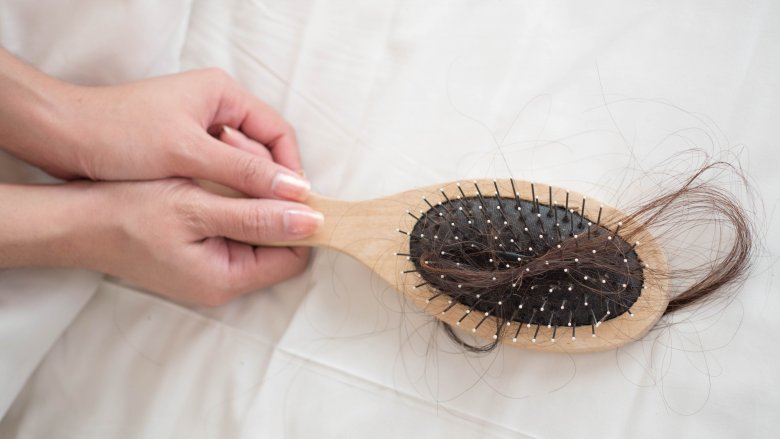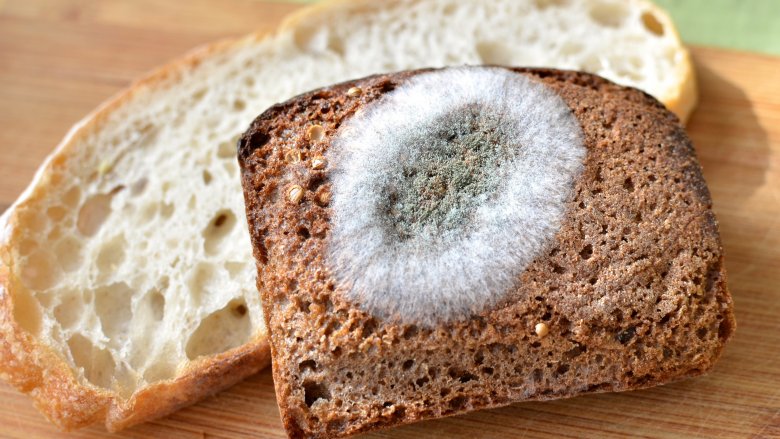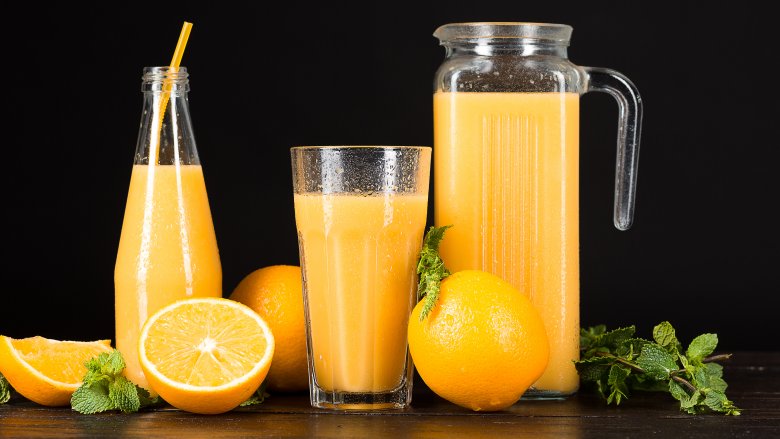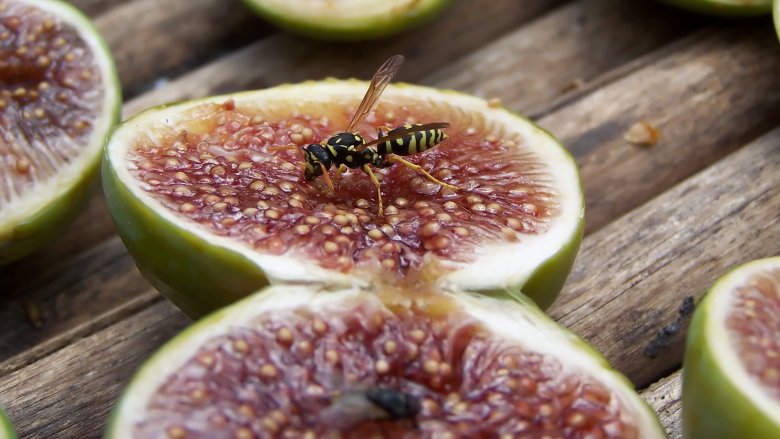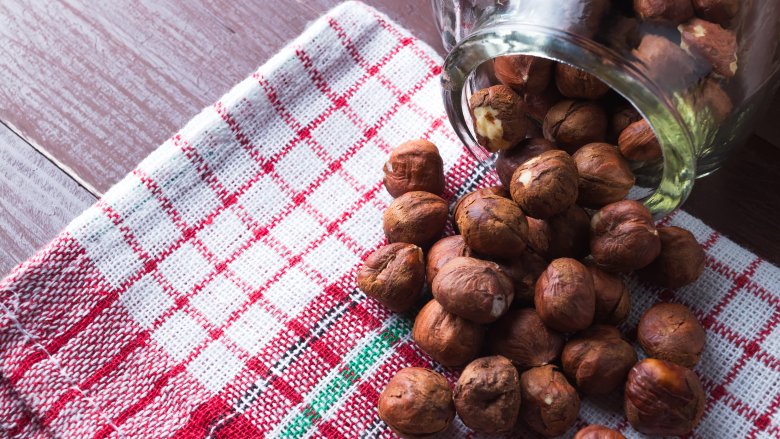Gross Things That Happen To Your Food Every Day
Keeping your kitchen or food prep area spotlessly clean and germ-free is something you take as a given, but do gross things still happen? Absolutely. In fact, a lot of the nasty stuff that happens to your food, happens without you ever even realizing it — which means you probably eat it anyway. Grossed out? You should be.
Flies and vomit...
Countless backyard barbecues have been ruined by these flying poop-nuggets, and if you've ever had one settle on you burger just as you're about to take a bite, you're familiar with their ability to convince you you've had enough, thank you very much.
So, should you throw your food away? The answer's tricky, and we'll start with what the Penn State College of Agricultural Sciences has to say. That fly could be carrying any of 65 different diseases — including tuberculosis and typhoid fever — picked up from preferred landing spots like feces and decaying matter. They may also be puking on your food if they're not swatted away — they can't digest internally, so they spit everything out then suck up the slurry.
But the University of Florida says while flies are a serious problem and potentially dangerous to children, the elderly, and people with weakened immune systems, most healthy adults aren't susceptible to the tiny bits of yuck a fly might carry. So cover your food, and use your best judgement.
You're seasoning with insect bits
No matter how hard you try to keep bugs from landing on your plate, you're still eating them. You're putting bugs in your food every time you shake out a bit of seasoning or spice.
Let's talk specifics. In 2013, the FDA issued a statement (via CBS News) that about 12 percent of imported spices contained things like bugs (alive, dead, and sometimes in parts), wood, synthetic fibers, and animal hair. In 2015, a California man who took turmeric to treat inflammation had his samples tested, and found whole cigarette beetle larvae, rodent hair, and around 90 insect parts (via ABC News). According to the lab, other tests came back with as many as 195 parts in a serving size of two teaspoons.
If you're wondering why the FDA doesn't do anything about it, that's because they allow it. Check out their official Defect Levels Handbook and you'll be horrified at the list of things they allow in food. Turmeric isn't listed, but pepper is allowed to be one percent mold, insect filth, or excrement, while oregano is legitimately allowed to have 1,250 insect pieces in every 10 grams. The concern? Aesthetic.
Your coffee's filtered through nastiness
If you drink coffee while you're at the office, ask yourself if you've ever seen those coffee pots getting a good cleaning. No? There's part of the problem. According to microbiologist Dr. Charles Gerba (via Fox News), there's probably mold and a bacterial slime coating your coffee maker, especially in the piping your coffee's running through.
Your single-serve coffee maker is no better. CBS Pittsburgh tested a single Keurig, and the swab came back with 4.6 million colonies of mold and bacteria, including E. coli. Instant coffee is sounding better by the second, right?
You eat hair, sometimes on purpose
Is there anything more disgusting than biting into something and pulling a hair out of your mouth? You cringe just thinking about it, don't you? It might be small consolation, but according to Northwestern dermatologist Maria Colavincenzo (via Popular Science), that piece of hair isn't going to cause you any actual physical issues. It's made of keratin, so it's completely inert. As for bacteria, there could be a spot or two, but the possibility of it causing full-blown gastrointestinal distress is so negligible it's not even worth worrying about.
Human hair is even added to highly processed foods on purpose. It's disguised under the name L-cysteine, and it's used to extend the shelf life of products like bread. It's a synthetic chemical made from human hair — most of which comes from Chinese hair salons. If that's not an incentive to start baking your own bread, nothing is.
Mold is totally growing on your food
You wouldn't bite into a brick of mold-covered cheese, so we hate to break it to you, but mold is growing on your food long before you can see it. That's because there are three different parts of mold: the stalk, the spores, and the root threads. The US Department of Agriculture warns that by the time you can see the fuzzy surface mold, those root threads have already gone deep into whatever's getting furry.
They also say molds are present in every kind of environment, indoors and out. They thrive in high-humidity areas, and if you want to do everything you can to keep mold from taking root in earnest, keep the humidity under 40 percent. But unfortunately, it's already there.
You're putting your food in a cart of poop
There are a ton of things on your mind when you go grocery shopping, but how clean your cart is probably isn't one of them. It will be after you find out what the University of Arizona found when they started swabbing shopping carts. A shocking 72 percent of carts were found to be contaminated with fecal matter. That'll make you think twice about throwing unwrapped foods like fresh produce into your cart!
But according to biology professor Pat Fidopiastis (via GOOD), it's not actually that big of a deal. He says all you need to do to keep bacteria from ending up on your food is take precautions like washing your hands (and your produce) after shopping, and you'll be fine. Still, it kind of makes you want to bypass a cart altogether, right?
You're putting your food on a conveyor belt of horrors
By the time you get to the end of that grocery shopping trip, you're probably thinking you've gotten past the most contaminated parts of the store. You couldn't be more wrong though, because you're actually doing something really, really gross to your food when you check out.
According to Food Safety News, you're dumping your food onto the most disgusting place in the entire store. Conveyor belts are so gross because they're made from a super-durable PVC material that lasts for up to 30 years. It's also a porous material, and it only takes about six months for it to become completely bacteria-infested. That porous nature is also what makes those belts impossible to clean, so just imagine what that ragged belt with those frayed edges must be sharing with your food.
Your orange juice is pretty old
You might already know orange juice might not be the best for you, but we're going to have to ruin OJ just a little more. Alissa Hamilton, author of Squeezed: What You Don't Know About Orange Juice (via Civil Eats), wrote extensively on the whole, gross journey orange juice goes on before it makes it to your table. That "fresh" juice you like to start your day with has probably been around a lot longer than you think.
Essentially, oranges are picked during orange season and for the popular Valencia, that's between March and June. Orange juice is available all year around, though, and making that possible is a process called dearation. Oxygen is removed from the juice and it's stored in airtight vats for up to a year before it's prepared for the grocery store shelves with the reintroduction of both oxygen and flavor, with the addition of flavor packs prepared to a particular taste by each orange juice company.
Wasps are breeding and dying in your figs
Figs are only made possible by a pretty gross lifecycle BBC Earth took an in-depth look at. Figs essentially act as wombs for developing, infant insects called fig wasps. Female fig wasps — carrying the pollen that makes it possible for the fig tree to keep producing figs — lay their eggs in the center of a structure called the syconium. The eggs hatch, the baby wasps grow and mate inside the syconium. When all that's done, males will chew their way out and die, while females will move on to another syconium to start the cycle all over again. That's what happens in monoecious species of figs — those with both male and female flowers. It's a little different on single-sex (dioecious) trees, where wasps can only nest and grow inside the male flowers. When they crawl inside the female ones, they die inside those structures that produce the figs.
The FDA allows 10 percent of figs to contain insects or insect pieces. Even if your fig isn't one that a female wasp died inside of, you'll never look at those square cookies in quite the same way.
Bacteria transfer can happen in a flash
Let's say you're cutting veggies for dinner, and one falls off the cutting board. You scoop it up, throw it in the pan, no big deal, right?
There's been a surprising amount of research done on how fast bacteria transfers to dropped food, but according to experiment published in the American Society for Microbiology's Applied and Environmental Microbiology, some bacteria transfers instantaneously. They found the wetter the food, the more bacteria transferred. The surface it was dropped onto made a difference, too, with carpet less likely to transfer a ton of bacteria than a stainless steel or tile surface.
Microbiologist Dr. Charles Gerba told Food & Wine there's a ton of hidden bacteria lurking in your kitchen, especially around the sink, cutting board, and kitchen counter tops. Since these areas are generally damp, that makes them a perfect breeding ground for gross things waiting to hitch a ride on your food.
Cross contamination is more common than you think
Anyone who spends any time in the kitchen knows all about cross contamination. It's why we're careful with things like raw chicken, but according to SafeFood, there are all kinds of sneaky sources of cross contamination contaminating your food right now.
Do you have a dishcloth hanging from your sink or a cupboard handle? Have you changed it in the last two days? When they tested a series of dishcloths, they found E.coli on more than 27 percent, and Listeria on more than 13 percent. They also found the packaging used for meats and particularly chicken had a chance of contaminating everything in your shopping bag. You probably don't wash your hands right, either — 84 percent of people surveyed didn't wash right after handling raw chicken. That all leads to the potential of infecting your delicious, home-cooked meal with bacteria that's going to leave your family hurting for days, and no one wants that.

